Update: As per this news report the 6 new AIIMS-like institutes are scheduled to start the medical colleges from academic year 2012-13 and hospitals in the year 2013-14.
Following is from a report in Times of India.
With the beginning of construction work of IIT Bhubaneswar (IITBBS) campus on Sunday, work for permanent infrastructure of all three premier central institutes in city fell on track. While work for the campus of National Institute of Science Education and Research (NISER) here started on July 21, infrastructure for AIIMS is at an advanced stage of completion. All three institutes hope their permanent campuses to be functional by 2013.
Chief minister Naveen Patnaik inaugurated the IIT campus construction at Aragul village near Jatni on a 950 acre plot of land. IITBBS director, professor M Chakraborty, said the master plan of the campus has been designed to accommodate 10,000 students, 1,000 faculty members and 1,100 non-teaching employees, besides 1,000 out-sourced support staff. The institute also has plans to construct a research park, he said.
The first phase of work, undertaken by CPWD at an estimated Rs 800 crore, would be limited to hosting a capacity of 2,500 students, 250 faculty members and 300 other employees. Chakraborty hopes the institute will shift to its permanent campus by 2013 end or beginning of 2014.
At the already provided budget of Rs 388 crore, IITBBS would construct a main administrative building, lecture hall and classrooms, a laboratory complex, four academic schools (basic science, electrical, infrastructure and mechanical engineering), central workshop and students’ activity centre. The main building is slated to be a six-storey structure and the other schools of four storey each. The hostels as well as the residential quarters are to be seven-storey buildings, Chakraborty said.
Apart from its city campus, the IIT would also set up an innovation centre for climate change on the Puri-Konark coastline, under the School of Earth Ocean and Climate Sciences, the director said.
Construction of the permanent campus of NISER started on a 300-acre site about a month ago, also near Jatni, on July 21. The Rs 457 crore project would include a prayer hall on the hill top, five schools of different specialties, 11 hostels of 200 capacity each, healthcare centre and guest house, said NISER registrar Abhay Naik.
Work for the AIIMS, which started on 100 acres land at Sijua village in May 2010, is at a stage of about 80% completion, sources said. The proposed 978-bed hospital, under the Pradhan Mantri Swasthya Suraksha Yojana, is supposed to have 15 super speciality and 18 speciality wards.
August 16th, 2011
Today, the 22nd July, is a very auspicious day for us. It is on this day in 2008, the society of IIT Bhubaneswar was registered. Further, the date assumes more significance as we began our academic programme from the city of Bhubaneswar for the first time on 22nd July 2009. I wish to avail this opportunity to congratulate our students, staff, officers and faculty, who all are working as a dedicated team to develop this new IIT, for successfully completing 2 years of existence in the city of Bhubaneswar.
…
Infrastructure:
Temporary Campuses
We started our journey in 2008 from the campus of IIT Kharagpur. As mentioned earlier, we commenced our operation from the city of Bhubaneswar from 22nd July 2009. Currently, we are operating from a number of campuses which include IIT Kharagpur Extension Centre, Toshali Plaza at Satyanagar and Workshop cum laboratory complex near IIT Kharagpur extension Centre. Government of Odisha provided us about one (1) acre of land on which we have already constructed a new workshop cum laboratory complex (22000 sq. meters). The Government of Odisha also provided us two towers of Toshali Bhavan which we have already renovated. In addition IIT Kharagpur has constructed a new 200 capacity Dr. A. N. Khosla Hall of Residence near the Workshop cum Laboratory Complex for the students of this Institute. I must avail this opportunity to thank IIT Kharagpur for constructing the hostel which is of great convenience to us. We are also getting support of some of the sister Institutes like IMMT (CSIR) and Central Tool Room and Training Centre.
The class rooms and the laboratories are in place in our campuses at IIT Kharagpur Extension Centre, Toshali Plaza and the New Workshop cum Laboratory Complex.
IIT Bhubaneswar is well equipped with modern Teaching rooms and Teaching and Research Laboratories. All the class rooms are fitted with Multimedia Projectors, Internet Facilities and Wireless Connectivity. Besides the Normal teaching rooms, The Institute designed and developed three Virtual Class Rooms (VCR) sponsored by National Knowledge Networks (NKN). These rooms facilitate Real time on campus and Off-campus teaching learning process. These rooms are equipped with high end and high resolution equipment to facilitate the real time interaction among the students and teachers of the campus and as well as off campus students and faculty members. These class rooms are connected to the NKN Network by means of a dedicated 1GBPS Leased Lines.
The Government of Odisha has provided us 14 flats at Government Colony, Gajapati Nagar. We are fortunate to have found cooperation from the Housing Complex in SBI Colony Kesura wherein we have hired about 60 HIG 3 bed-roomed flats and few MIG flats for accommodation of our students and faculty. While the 3rd and 4th year male students have been being accommodated in the A. N. Khosla Hall of Residence, we have to accommodate others (all the girl students, research scholars and 1st and 2nd year students) in SBI Colony Kesura, 10 KM away from our academic campus. I may avail this opportunity to put on records my deep appreciation of the students, the staff and faculty who have to commute regularly between their residence and the various academic campuses. I am aware that this is strenuous. But I am sure our students, faculty and staff will accommodate the strains and be a part of the history in the making.
Permanent campus
The Foundation Stone of our campus at Arugul was laid on 12th February 2009. The Government of Odisha has allotted 936 acres of land at Arugul (near Jatni) for developing this new IIT of which we already have taken advanced possession of 598 acres. The Government of Odisha has started construction of 4 lane access road to IIT Campus from the National Highway 5. The work on water supply and electric supply to the campus is also in progress. The power supply systems for construction are virtually ready. The Honourable Chief Minister himself as well as the Chief Secretary of the Sate are taking active interests in the developmental work and are addressing issues that need their constant attention. It may not be out of place to mention that the Government of Odisha has also agreed to provide us 75 acres of land on Puri–Konark coast to set up an Innovation Centre for Climate Change.
Out of total 19 KM, we already have completed construction of 8 Km of boundary wall. About 10 bore wells have been sunk to facilitate construction work. IIT Bhubaneswar has also taken up tree plantation programme for its new campus.
The master plan of the new campus at Arugul for 10, 000 students, 1000 faculty and 1100 supporting staff has been approved and the total construction should be completed in 3 phases in next 12-15 years. The work for land grading, road and other related construction are expected to begin in August 2011. While the Government of India has approved construction of 2, 21,000 sq meter of covered area in the 1st phase, our consultant has already completed conceptual design of 1, 20, 000 sq meters of covered areas for various schools, residential quarters, hostels and other service/administrative buildings based on the availability of fund in the initial phase. Applications for clearance form statutory bodies (e.g. forest, BDA, environment) are under process and such clearance are expected shortly. We expect the tendering process to be over and hope that CPWD would be able to start the construction work by the end of this year or early next year. We are planning to move to our new campus by end 2013 or beginning 2014.
Academics
Academic Schools
IIT Bhubaneswar promotes a borderless academic environment: We have the concept of Schools, rather than Departments. We encourage academic staff and students to work together in an interdisciplinary environment. Initially we had set up the following five (5) schools:
• School of Basic Sciences (Physics, Chemistry, Bioscience, Mathematics)
• School of Humanities, Social Sciences and Management
• School of Mechanical Sciences (Mechanical, Manufacturing & Industrial Engineering, Aerospace Engineering, Naval Architecture)
• School of Infrastructure (Civil Engineering, Architecture, Urban Design, Town Planning, Traffic & Transportation Engineering)
• School of Electrical Sciences (Electrical Engineering, Electronics Communication Engineering, Computer Science and Engineering, Energy, Learning Sciences, Instrumentation)
The Institute has just set up the following two (2) new Schools:
• School of Mineral, Metallurgical and Materials Engineering – Materials, Metallurgy, Mining (Relevant to the Rich Resources of metals and minerals in the region)
• School of Earth Ocean and Climate Sciences (Relevant to the region keeping in view the vast Coast Line, Rich Biodiversity and mineral resources, need for Disaster Management and Mitigation arising out of Flood, Cyclone etc.) As a part of this School, the Institute will set up an Innovation Centre for Climate Change on the Puri-Konark coast line.
The following schools are proposed to be set up in the second phase of our expansion:
•School of Chemical and Biochemical Engineering Chemical, biochemical, biomedical, biotechnology
• School of Design and Creative Arts
Academic Activities
We started our journey with a total of 94 students in three (3) undergraduate programmes namely civil, electrical and mechanical engineering with an intake capacity of 40 each in 2008. We already have introduced Ph. D. programmes from 2009 and have about 35 Research Scholars. We are planning to start our postgraduate (MS/M. Tech.) programmes from July 2012. Currently, we have about 500 students (UG and Ph. D.), 50 full time faculty members 7 officers and 40 supporting staff.
Awards and Honours
We are proud that our Chairman Board of Governors, Professor P. Rama Rao, has received the second highest civilian award “Padma Vibhushan” of the Government of India this year.
Prof. S. C. Datta of the School of Infrastructure was awarded Fulbright-Nehru Sr. Research Fellowship and he visited the University of California at Davies, USA. He has been awarded the prestigious Occasional Lecturer Fund by Council for International Exchange of Scholars, US Department of State, for delivering two invited lectures at University of Massachusetts, Dartmouth, during his Fulbright Grant period in USA. Dr. Sumanta Haldar of the same School received the Prof. Leonard’s best Ph.D. thesis award from Indian Geotechnical Society. Dr. C.S. Bhende of the School of Electrical Science received the best Ph.D. thesis award from Indian National Academy of Engineering.
Mr. Pyari Mohan Pradhan, Mrt. Satyasai Jagannath Nanda and Mr. Vikas Baghel, Research Scholars of the School Electrical Sciences were awarded the Department of Foreign Affairs and International Trade, Government of Canada, “Commonwealth Graduate Student Exchange Programme” fellowship. Dr. Subhransu R. Samantaray of the same School won the Samanta Chandra Sekhar Award for 2010 from Orissa Bigyan Academy for his contribution to Engineering and Technology by Oriya Scientist working in Odisha. Dr D. Sahoo of Humanities, Social Sciences and Management received the Best Paper Award at the International Workshop on Regional Competitiveness and International factors Mobility at Oriens France. Professor M. Chakraborty received the Best Technical Paper Award 2010 from the Indian Foundry Journal of the Institute of Indian Foundrymen.
Mr. Raghav. R, 3rd Year Student of Mechanical Engineering won the All India essay competition for college students conducted by the NGO: Nandini Voice for the Deprived
Publications
Within 2 years of our existence in the city of Bhubaneswar, the faculty members have already contributed to creating new knowledge by publishing about 115 papers in National and International Journals of repute. Besides, 85 papers have been presented in various National and International Conferences in India and Abroad that have made our presence felt all over the world. Our doctoral and undergraduate students have also published a few papers in journals and made presentations in conferences. Our faculty members have also published 17 books/ chapters of books in Humanities, Science and Technology.
Sponsored Projects and Consultancy and Endowment
The Institute already has received a number of sponsored projects from various funding agencies like DST, CSIR and DRDO and consultancy from industries worth more than 320 lakhs.
Industries are coming forward to join us in developing this new IIT. M/s MGM Minerals Group has already established a perpetual “MGM Chair Professor” for the School of Minerals, Metallurgical and Materials Engineering with an endowment of Rs 300 lakhs.
International Collaborations
IIT Bhubaneswar has started collaborative activities with a few Universities abroad. We already have signed MOU for faculty exchange programmes with the University fo Massachusetts at Dartmouth USA, and the University of Western Ontario Canada. Professor Lord S. Kumar Bhattacharyya of the Warwick Manufacturing Group, of the University of Warwick has been appointed as Distinguished Visiting Professor of IIT Bhubaneswar while Professor Richard Dashwood of the same university spent two weeks at IIT Bhubaneswar as visiting Professor in March 2011. Professor Asit K Biswas, President of the Third World Centre for Water Management, Winner of Stockholm Water Prize (2006) has also been appointed as Distinguished Visiting Professor of this Institute.
Workshop/Conferences
The Institute organized a one day workshop “An Academy – Industry Interface” with participation from the Warwick Manufacturing Group, the University of Warwick, UK, IIT Bhubaneswar, Tata Steel, Infosys, IBM, WIPRO, L&T and others on 17th September 2010. Another workshop “Multivariate Statistical Analysis” was organized by the School of Humanities, Social Science and Management on 24th March 2011. The Training and Placement Section had organized a Panel Discussion “Managing Generation Y in workplace – A Challenge to the Indian Industry” on 12th March 2011. The Institute has started organizing “Research Scholars Day” on the National Science Day on 28th February every year.
Summer Internships
Our students have received support from various Universities and Industries in India and Abroad for summer internships. Some of these Universities and Industries abroad are the University of North Texas, Oklahoma State University, University of Massachusetts at Dartmouth, Northern Arizona University in USA, University of Warwick UK, McGill University Canada, University of Cologne Germany, University of Padua Italy, Flanders Mechatronics Centre Belgium, ExTechNa GmbH Switzerland, University of Zacadecas Mexico, Tianjin University China, Ming Chi University Taiwan and University of Technology Malaysia.
… Student Activities
Our Students under the Students Gymkhana are quite active and are organizing various activities. They already have formed several societies like Robotics Society, Entrepreneurship Cell, Dramatic Society, Music Society to name a few. They have been organizing cultural (Alma Fiesta) and Techno-Management (Wiessenaire) festivals successfully with support from many sponsors/industries drawing participations from various colleges/institutions of the country.
July 28th, 2011
(Thanks to Debi Sarangi for the pointer.)
The strategic plan is available at http://www.cable-quest.in/pdfs/StrategicPlan%20of%20I&B%20ministry.pdf. Following are some relevant excerpts.
(viii) INDIAN INSTITUTE OF MASS COMMUNICATION:
The Indian Institute of Mass Communication (IIMC) is an autonomous organization under the Ministry of Information & Broadcasting and a ‘Centre of Excellence’ in the field of communication teaching, training & research. The Institute was set up on August 17, 1965, as a department of the Ministry of Information & Broadcasting, Govt. of India in response to a need felt to evolve a methodology for effective use of communication resources as part of the country’s overall development strategy. The Institute was registered under the Societies Registration Act (XXI) of 1860 on 22nd January, 1966 and receives grant-in-aid from the Govt. of India through the Ministry of Information & Broadcasting to meet its recurring & non-recurring expenditure. While IIMC provides knowledge and skills to communicators in a variety of disciplines, including print, photography, radio & television, development communication, communication research, advertising & public relations, the Institute also collaborates with national & international agencies in conducting seminars, training, workshops, etc. It also undertakes joint research projects and organizes short- term courses to meet the specific needs of the industry, government and public sector organizations. The Institute presently have a branch at Dhenkanal in Orissa and propose to set up four new Regional Centres in the States of J&K, Kerala, Mizoram and Maharashtra.
(v) Indian Institute of Mass Communication (IIMC) (http://iimc.nic.in/)
Run courses with the objective to produce well-equipped communication professionals sensitive to needs of changing mass communication scenario; Conduct of short term specialized courses to meet the professional training needs of media personnel working in the Central/State Governments and Public Sector Organisations;
Conduct of seminars, symposia and conferences on various themes of communication with a view to contributing better understanding of communication in the context of India and other developing countries; Provide consultancy services on request to Central/State Government Departments and Public Sector Undertakings, in designing and organizing training and research programmes related to Development communication.
(a) The following steps needs to be taken –
1. First step
* Up-Gradation of One-Year PG Diploma Courses into Two-Year Advanced PG Diploma Courses.
* Seeking of Equivalence to Masters Degrees for the Two-Year PG Diploma Courses from Ministry of HRD.
* Introduction of at least 2 new Two-Year PGD Courses: in Development Journalism and in Corporate Communication & Media Management.
* Setting up of 4 new Branches ofIIMC in J&K, Mizoram, Maharashtra & Kerala.
2. Second step
* An Act of Parliament to declare IIMC an ‘Institute of National Importance’ such as the IITs, AIlMS, NIFT, etc., thereby also giving it Degree-granting powers.
* IIMC proposes to continue using its established and well-recognised Brand arne, as in the case of the above Institutes.
Upgradation of branches to full-fledged Institutes offering all Courses at par with IIMC, Delhi.
* Provision of Buildings, Infrastructure, and expansion or Technical Equipment and Human Resources at the 4 new Branches of IIMC (DPRs to be prepared after allocation of land by State Governments and in-principle approval of the Planning Commission).
* Dialogues with various State Governments for opening of new IIMC Branches in their States and pursuing them to allot at least 10-15 acres of land free of cost and also made available temporary accommodation for start of the courses from 2015-16.
3. Third Step
* Introduction of Specialized and Niche Courses (a) At least 2 new Two-Year PGD Courses
(i) Development Journalism
(ii) Corporate Communication and Media Management (b) More extensive Courses leading to better job prospects for students (c) Advanced academic programmes such as M.Phil and Doctoral Programmes (d) More Post Graduate MA, M.Phil. and Ph. D. Programmes
* Enhanced National and International recognition of IIMC and its programmes and enhanced interaction with the best international Universities and institutes in the field.
* Access to research and training funds from National and international funding bodies.
* Creation of IIMC Affiliates abroad.
* Correspondence with International Media Institutions/Government for opening of Centres in their Countries.
(b) Requirement of resources (i) Financial
* IIMC has already been sanctioned an outlay of Rs. 51.50 Crores for the activities mentioned in the first step as above
* Based on the current trend of requirements, provision of buildings, infrastructure and expansion of technical equipments for a branch for establishing a permanent campus will be approximately Rs. 100 Crores, excluding the cost of land, which would be provided by the State Governments free of cost ( Total Requirement for four branches will be Rs. 400 Cr)
* Financial requirement for the introduction of various Advanced Courses, M.A., M.Phil. and Ph.D. will be approximately Rs. 10 Crores
* Financial requirement for introduction of new branches in other States will be approximately Rs. 5 Crores in temporary accommodation to be provided by State Governments free of cost
Total Requirement : Rs. 415 Cr
(ii) Human Resources –
* 150 personnel will be required to achieve the activities detailed in the first steps
* Additional 25 personnel per branch will be required for fulfilling the activities given in the next steps
July 4th, 2011
Following are excerpts from Bibhuti Barik’s report in Telegraph.
… The master plan is ready and the Department of Atomic Energy (DAE) has selected Larsen and Toubro (L&T) to execute the job. They are expected to start the work next month. The project has to be completed within 36 months … We hope that the Phase-I work comprising four major schools and the administrative block will be over by the end of 2013,’’ said the institute’s registrar, AK Naik.
The campus is coming up on 298 acres near Jatni.
While the forest department has already marked 285 trees for felling top facilitate work, steps to ensure enough greenery are being taken by planting 2,500 saplings along its fenced boundary. “We are planning more afforestation programmes in future,” added Naik.
The project envisages an expenditure of Rs 457 crore in the first phase including Rs 160 core on residential township and Rs 130 crore on academic buildings and a sports complex. The Centre has sanctioned Rs 823.19 core for the entire campus project in Bhubaneswar.
After fencing the authorities have deployed a 25-member security team with a supervising officer to keep watch. … the NISER campus site is safe. A transformer has been installed at the site to ensure uninterrupted power supply. Two corrugated tin sheds have also been put up at the site for the engineers to work out of.
The Registrar added that the construction work was getting delayed as the approval of the one of a senior officials of the Ministry of Finance was still awaited. Once it was available the executing agency would go ahead with the work. Earlier there was some delay on account of the time taken by the department of atomic energy (DAE) to grant certain approvals.
“The DAE technical panel inspected, checked and approved each and every aspect of the engineering drawing which took one year,” said a senior professor, who is an advisor and member on the NISER Board.
Currently operating from a transit campus of 5,000 square metres within the Institute of Physics (IoP), Bhubaneswar premises, NISER has lab, teaching and research facilities. While Rs 12.5 crore has been spent on these facilities for the school of chemistry Rs 13.5 crore for the school of physics, Rs 25 crore for the school of biology and Rs 5 crore for the school of mathematics.
… “We have been promised a three-acre plot by the state government for setting up a city campus in future. This will include a 1,500 seated conference hall,” said the registrar.
June 24th, 2011
Following are excerpts from the Economic Times article.
The IITs have completed 50 years and have helped build India. They were set up for producing high quality technical human capital for India and have met their objectives. But, as is the character with such institutions, they have not changed with the times and are not providing India with what she now needs.
… The IIT boards and the directors are unable to take any financial decision which they deem fit without the approval of the government . Even for an overseas travel of the director or the faculty, permission is needed. They are subject to austerity measures of the government, a perfect situation to emasculate an educational institution.
The demand for an IIT seat is enormous and has spawned a tutorial industry that earns more revenues than the IITs themselves. This has resulted in large number of students spending up to two years of their youth going to cramming schools learning pattern recognition, forgetting the art of thinking and problem solving knowing that their lives are made once they get entry into the hallowed portals. Today about 60% or more of the intake is from the coaching mandis. This has also resulted in many bright young Indians deciding not to undergo the ordeal and go overseas for higher education. 250,000 of them study overseas, over 110,000 in the United States, about 45,000 in the UK spending about $ 6bn on fees and costs annually …
Overall , the 15 IITs graduate 7000 undergraduates, 6000 post graduates and about 1700 PhDs annually . Sadly only about 2% of the undergraduates go on to their masters and PhD in the IIT system. The IITs hold fast to the idea that by squeezing input they can get a quality output, an idea that has been consigned to the dustbin of history. Increasing the scale and size can give them the diversity of talent, the resources, the ability to have more quality faculty and the depth and width needed for an elite educational institution.
… the IITs will live in their ivory tower and possibly become less and less relevant to India’s need as neither are they meeting India’s need for more human capital nor producing the kind of PhDs India needs.
… The best solution is to open up the education system and allow competition, the dreaded word in academics, to come forth. India should revise her educational policies and allow the private sector to set up "innovation universities" granting them all that they need. Full autonomy, academic, administrative and financial to chart their own future. Some safeguards are needed, as this is a public good. A large corpus of say Rs 100 crore, an open merit based admission policy, a faculty compensation policy based on minimum UGC scales and an assurance that they will aim to be amongst the top 100 in the world over the next 25 years. To ensure access to the merited we need a national scholarship scheme which will fund students. India needs to trust the genius of her citizens to create institutions that are world class and not look at them through myopic eyes with suspicion.
… Today there is a flight to quality. The bad colleges are dying since students have a choice, they are voting with their feet. The good ones are expanding and seeing greater demand. The market mechanism has worked, not by design but by serendipity. So there is hope. Look at various other sectors today. Bharti has made BSNL redundant and has given us a choice, Jet has overtaken Air India and given us a choice, the power system in Mumbai is still the best, and in education the Indian School of Business has turned our IIMs inside out. The IIMs actually want reform, expansion and are concerned about their future .
Competition and an open liberal environment for higher education will work .
I agree with most of the points made in the article and its arguments buttress the need for early approval of universities like the proposed Vedanta University.
One point where I disagree is the suggestion that 100 crores is a large corpus. If the goal is to be in the top 100 in the world, a corpus of 100 crores is very little. That is only 20-25 million USD. In comparison the corpus of Harvard and Stanford are of the order of 25+ Billion USD.
June 16th, 2011
A committee under the chairmanship of Dr. Anil Kakodkar has circulated a report (see also here and here) with the above name. Following is an input that I hope to send to the committee.
My suggestion is that the IITs combine the idea of free seats and paid seats that is used in many state engineering colleges with (some aspects of) the idea of honors colleges used in many universities in the US.
This means, for any discipline or program, there would be some number of seats (say between 20-40) for a "Research-Honours" program. The students in this program will be required to be involved in research all through their 4 years. Starting from second year they would be part of the research lab of a faculty and each semester they would have to sign up for research credits (and do research) whose grade will be based on research done by the students. Each class from the 4th semester onwards would have research component where students would have to go beyond textbooks and read latest papers on that topic. The students would be required to publish in a good international conference or journal before they graduate. During the summers they will be required to spend time in research labs. In general these students would be motivated and prepared for research careers as is being done in the IISERs and NISER. For these students the fees will be minimal and they may be even given scholarships like the INSPIRE scholarship. To remain in the "honors-research" program the students would have to maintain a required grade point average.
The rest of the students would be in regular programs (as they exist now) and would be required to pay more substantial fees, similar in amount to what the Kakodkar committee recommends. (Based on their academic performance some of these students may be allowed to change over to the "honors-research" program after the end of first year or perhaps even later.)
The above idea may be implemented at NITs too, may be with lesser number of seats in the "honors-research" program.
This will address several issues mentioned in the Kakodkar committee report.
- It will result in more IIT (and NIT) graduate pursuing research.
- It will result in more funds for the institutes.
- The students will have a clear expectations. The ones going to the "research-honors" program will know that research is expected of them and they are supposed to study hard.
The rationale behind the fees difference is fairly obvious. The "research-honors" students have a high chance of pursuing research in their chosen fields and that is the current need of the nation. On the other had the other students, as evident from the current trend, are less likely to pursue careers in their own disciplines (except the ones in electrical/cs/it/electronics areas) and many are likely to go for management and other careers. Since that is not the core goal of the IITs, these students need not be subsidized. Loans and other mechanisms need to be in place so that everyone who can get admitted to a program is able to find the money for the fees.
The above is a bare-bone idea and needs to be flushed out with more details. One may look at how honors programs are administered in many US universities to flush out some of the details. See for example Barrett Honors College (ASU).
June 7th, 2011
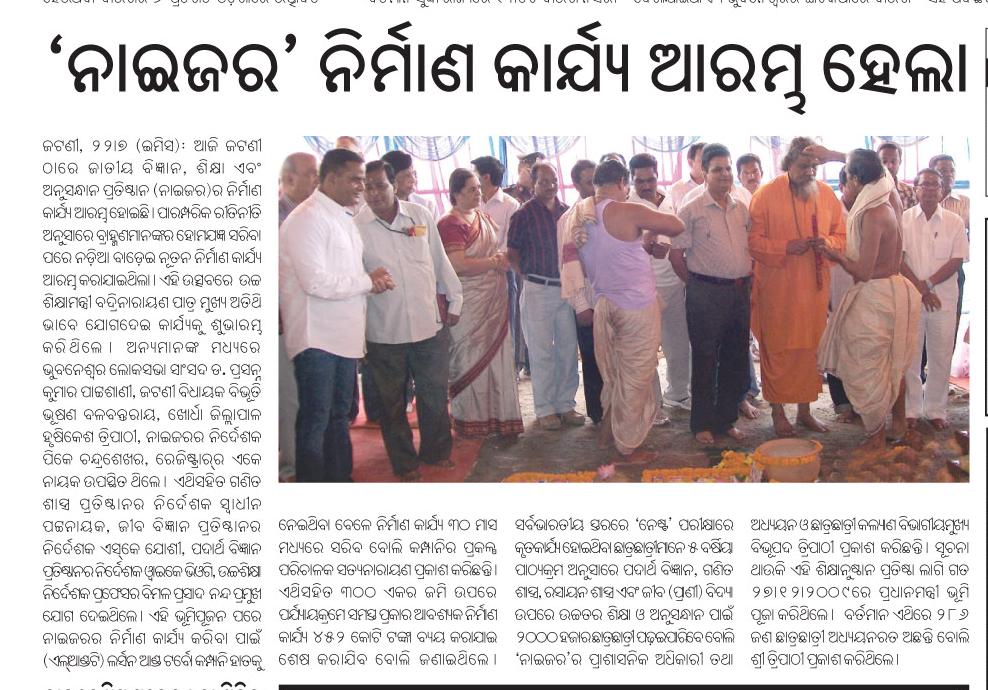
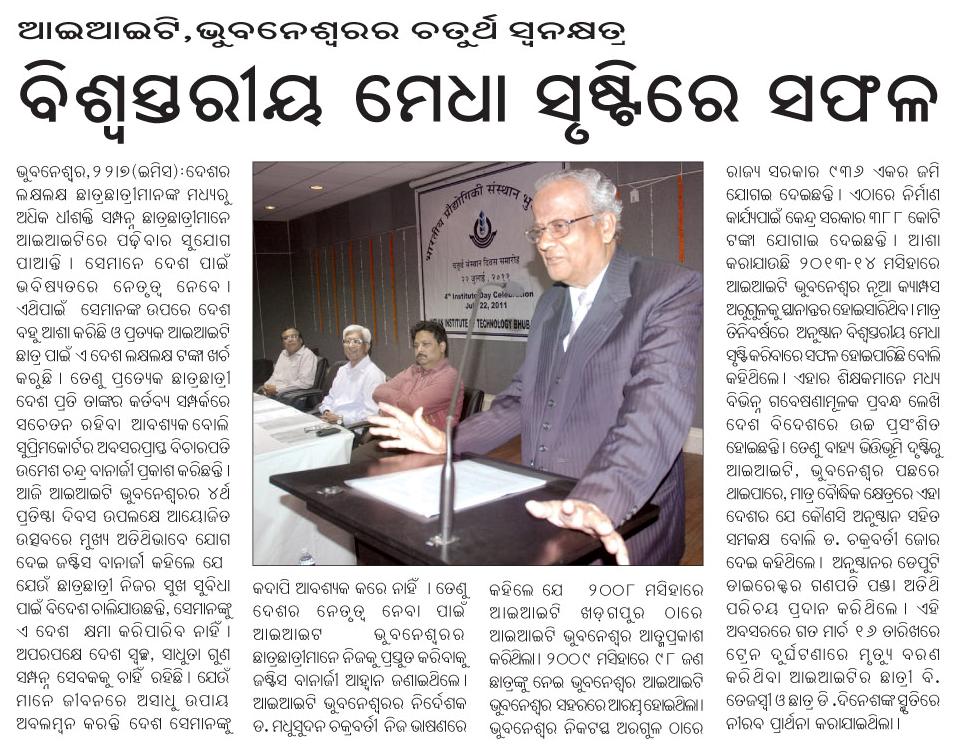
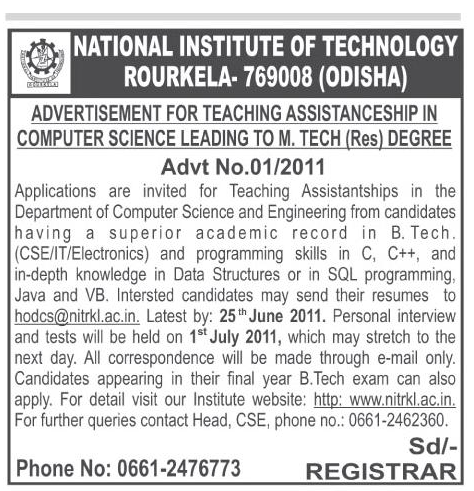
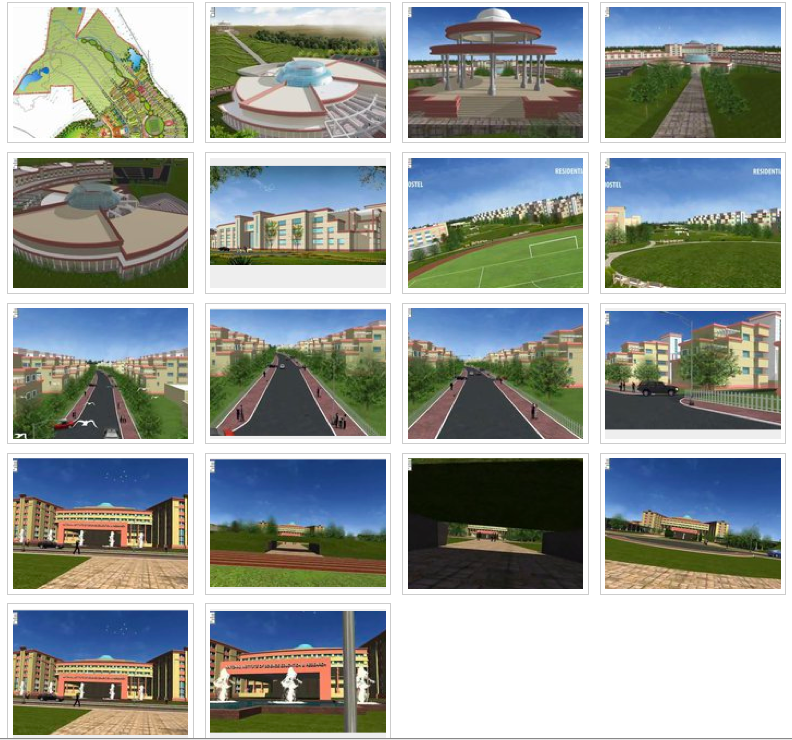
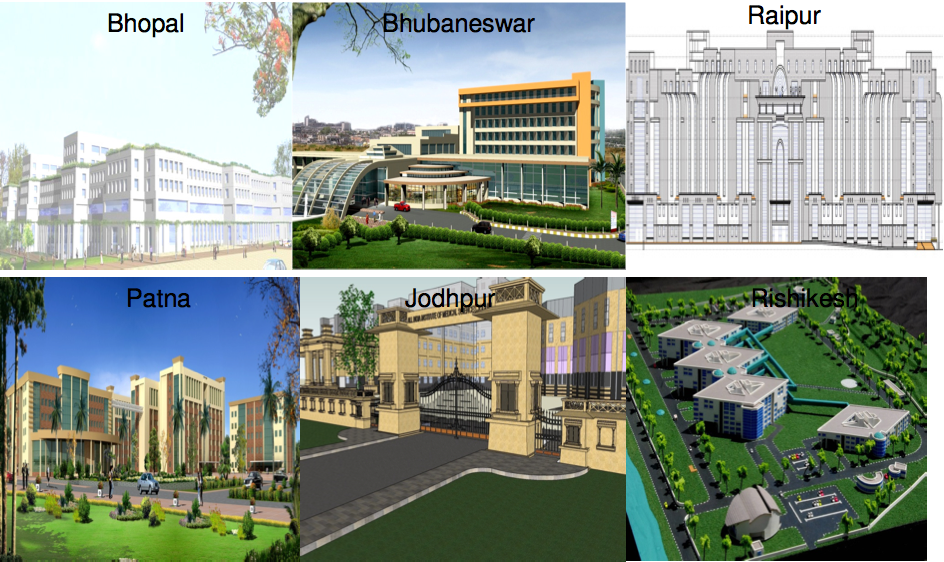 The page at
The page at 